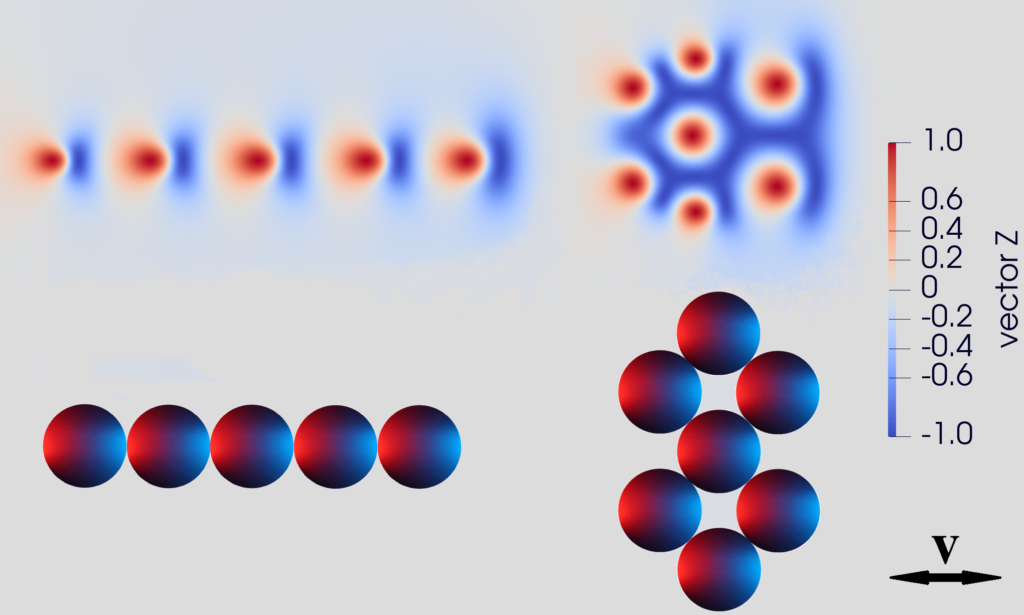Allison W. Teixeira (University of Lisbon) “Flocking” dynamics of active skyrmions

Motivated by recent experimental results [1] revealing rich collective dynamics of thousands-to-millions of active liquid-crystal skyrmions, we developed a particle-based model to investigate the “flocking” dynamics of these active skyrmions. The fundamental physical mechanism driving skyrmion motion is associated with the “non-reciprocal” rotational dynamics of the LC director field when the electric field is turned on and off. Using a data-driven approach based on numerical results from the continuum model of liquid crystals using the Frank-Oseen formalism, we have mapped this “non-reciprocal” motion to an effective force acting asymmetrically when the electrical field is on or off. Successfully replicating the motion of skyrmions as described by the continuum model, our simulations also mimicked experimental results, showing that the direction and velocity of the skyrmion depend on the frequency of the on/off cycle. We adapted this particle-based model into Langevin dynamics simulations for subsequent application to model the experimental scenario involving thousands to millions of skyrmions. Additionally, we calculated the multipole expansion of the skyrmion’s perturbation, responsible for their interaction. By introducing a dipole and quadrupole interaction between skyrmions along with this “non-reciprocal” dynamic, we demonstrated that the structures of skyrmion clusters can transition from chain-like to compact configurations based on the pitch and electric field.
References:
[1] Sohn, H. R. O., Liu, C. D., & Smalyukh, I. I. (2019). Schools of skyrmions with electrically tunable elastic interactions. Nature Communications, 10, 4744.


